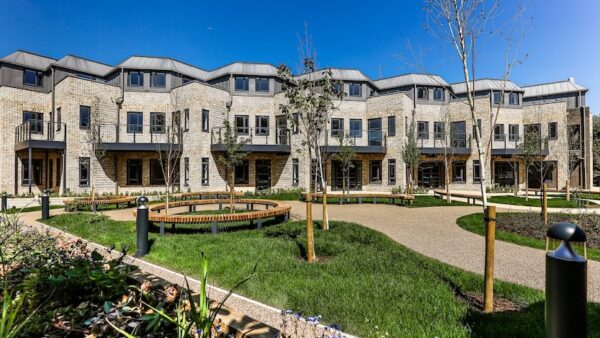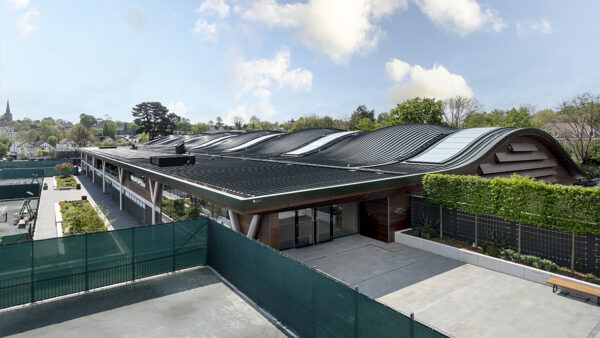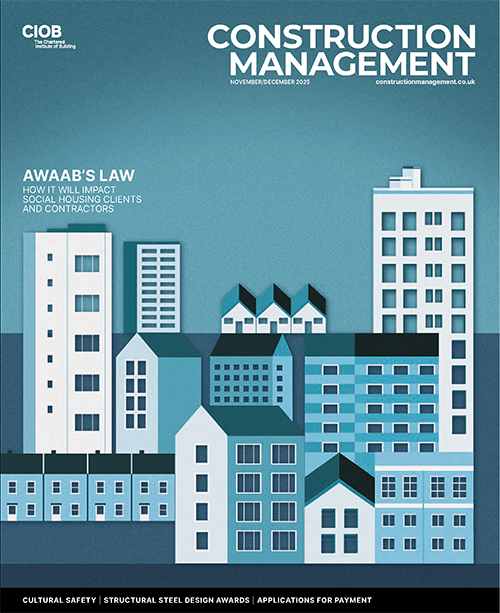
Walter Lilly has completed the first significant refurbishment of Lambeth Palace in more than 70 years – a £40m infrastructure and reservicing project aimed at improving accessibility and sustainability across the historic site.
The works were carried out while maintaining the operation of the Palace, which serves as the London residence of the Archbishop of Canterbury and includes buildings dating to the 12th century.
After plans were approved in 2021, CIOB member company Walter Lilly was appointed main contractor and worked with Wright & Wright Architects and Historic England to deliver a conservation-led, fabric-first programme.
A key element of the programme was the restoration of the Great Hall’s timber roof, originally damaged during the second world war. Carried out by specialist carpenters using traditional joinery techniques, the work was designed to ensure structural stability while preserving the roof’s historical form.
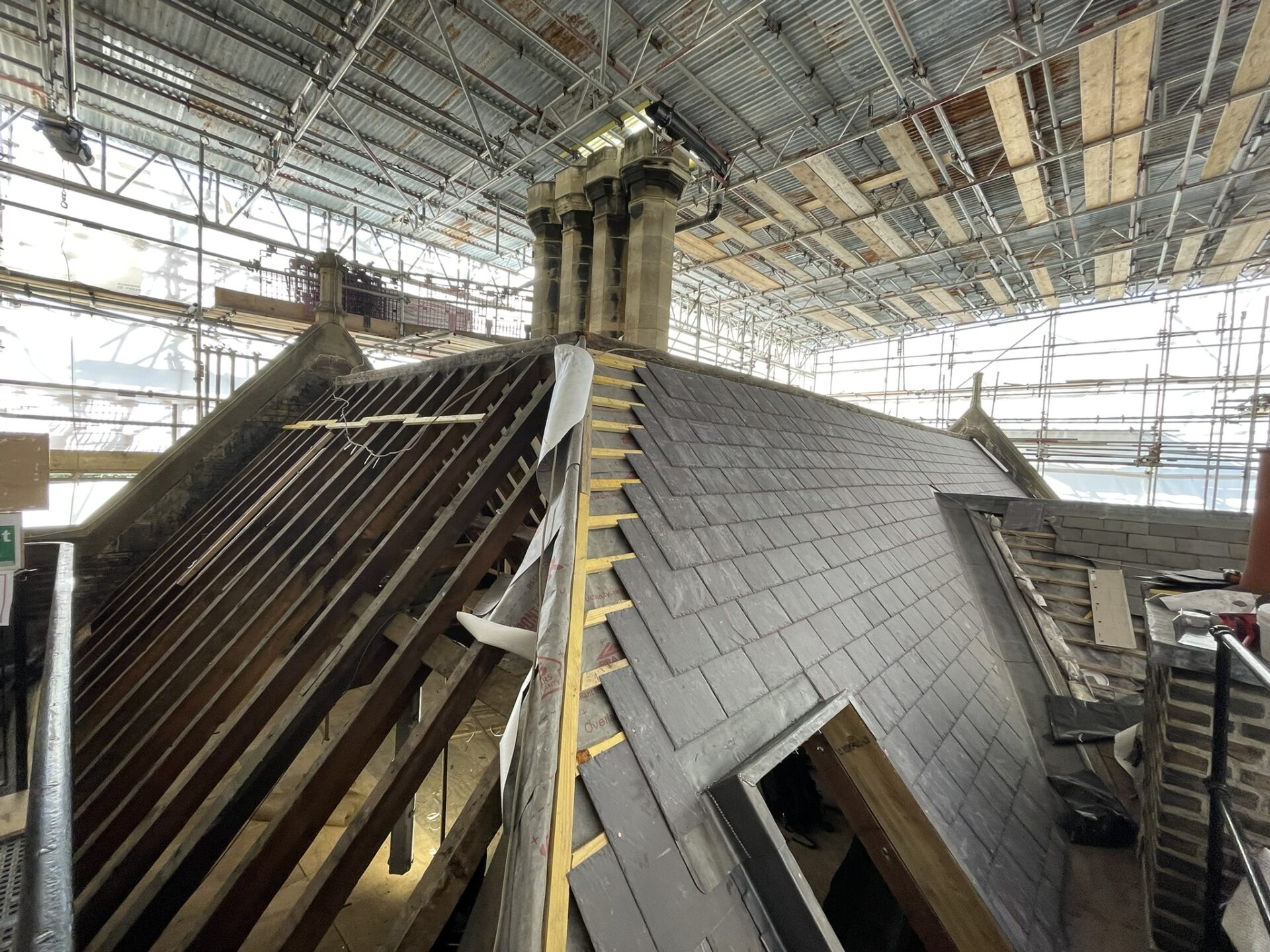
Other tasks included the replacement of 1,450 sq m of timber flooring, cleaning and repair of 800 sq m of historic stonework, and internal decoration spanning more than 13,500 sq m.
Groundworks for new services revealed archaeological remains, including 500-year-old structural walls, clay pipes, and early drainage infrastructure. Walter Lilly coordinated closely with the Museum of London Archaeology (MOLA) and Historic England to record and preserve these finds, adjusting design plans where needed.
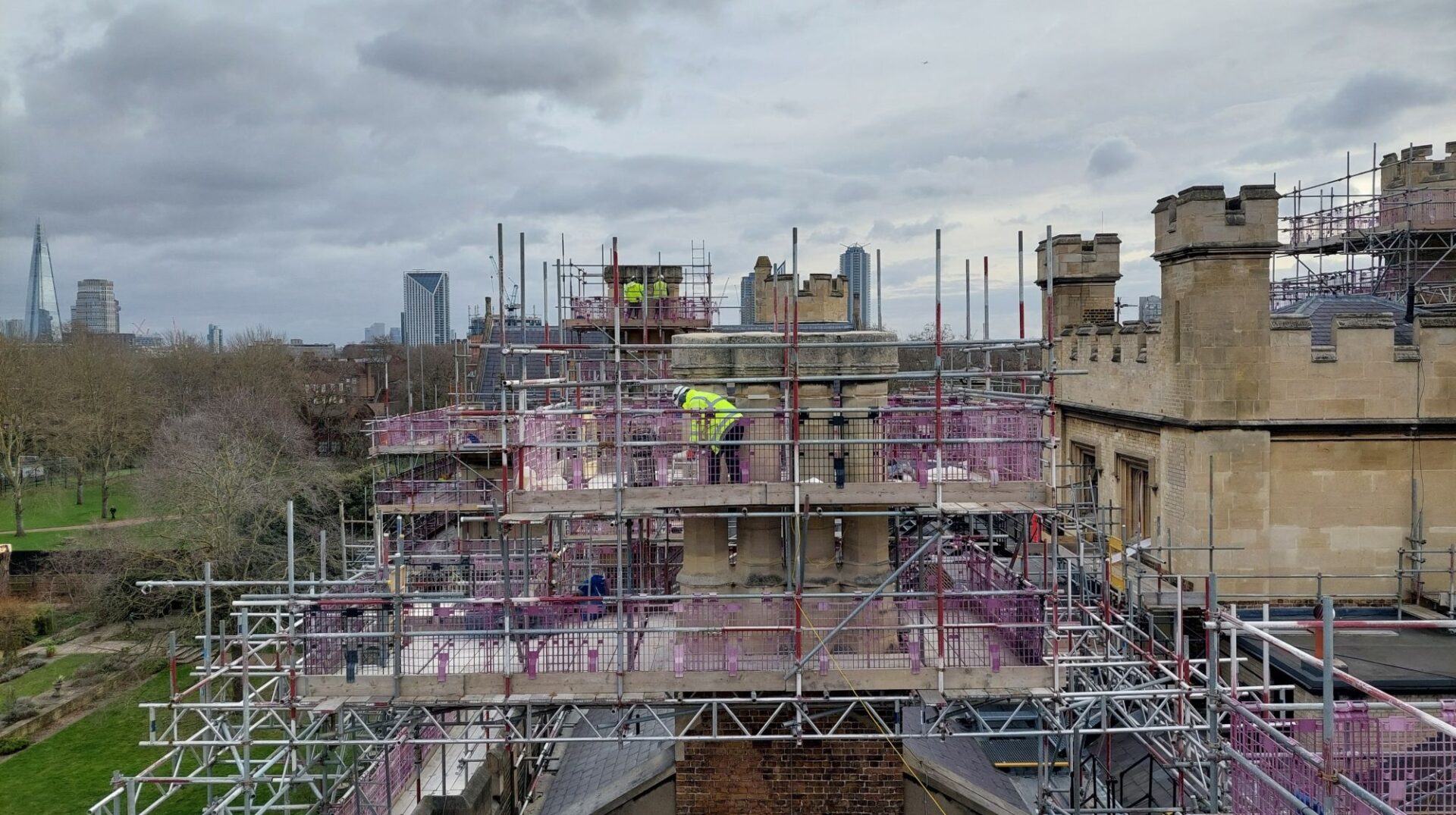
Upgrades to M&E systems were routed through existing voids and discreet structural openings. New pipework, trace heating, and automated venting systems were installed to meet performance requirements while minimising intervention in historic fabric.
Sustainability and energy strategy
The project forms part of the Church of England’s wider objective to reach carbon net-zero by 2030.
A new energy centre was installed, along with three air source heat pumps. Some 160 windows were replaced with bespoke double-glazed sash units. These were based on 19th-century drawings of the Palace’s original fenestration, allowing the design to align with conservation requirements.

Other works included the upgrade of 140 radiators, reusing components where possible in line with circular economy principles. Timber procurement followed FSC/PEFC guidelines, and 39 tonnes of timber were recycled during the programme. The team is targeting a BREEAM ‘Excellent’ rating.
Walter Lilly integrated apprentices into the site team, and training was provided in areas including stonemasonry, carpentry, M&E installation, site management, and quantity surveying.

Chris Butler, managing director at Walter Lilly, said: “The completion of the reservicing works at Lambeth Palace represents a major milestone in the conservation and modernisation of one of the UK’s most treasured historic buildings.
“Despite the complexities of working within a live, occupied environment and navigating archaeological discoveries during underground installations, we are proud to have played a role in delivering a sustainable solution that supports the Church of England’s net-zero ambitions.”
Project team
- Principal contractor: Walter Lilly
- Architect: Wright & Wright
- M&E, structures, sustainability: Arup
- Project manager: 3PM
- Cost consultant: Fanshawe
- CDM: Construction CDM Services
- Archaeologist: MOLA
- Approved building inspector: Socotec





